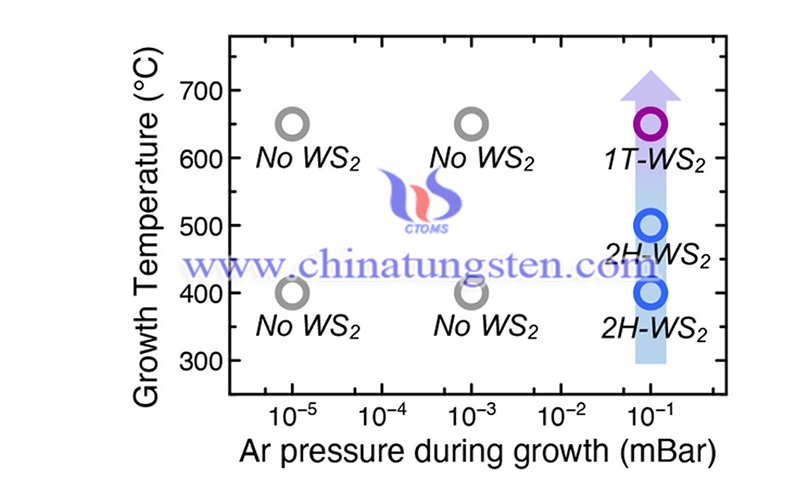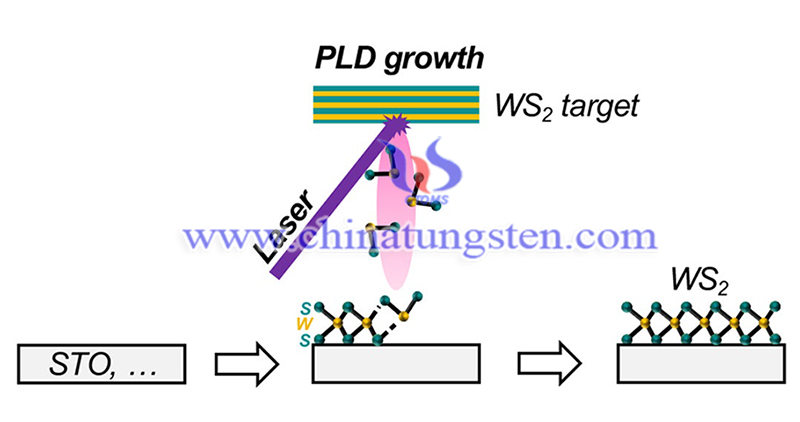Measurement of Interactions Between Fermi Polarons in WS2 Semiconductor
- Details
- Category: Tungsten's News
- Published on Saturday, 03 December 2022 19:02
Recent research led by an Australian university has provided the world's first measurement of interactions between Fermi polarons in a two-dimensional WS2 semiconductor, using ultrafast spectroscopy capable of probing complex quantum materials. Researchers at Swinburne University of Technology have characterized the exciton-polaron interactions in experiments on 2D semiconductor monolayers.
The FLEET collaborators at Monash University and RMIT University have developed a theoretical model to explain these experimental signals. They found that long-range repulsive interactions are mediated by phase-space filling effects, while short-range attractive interactions lead to the formation of cooperatively bound exciton-exciton-electron states.

(Credit: Godel et al. ACS Appl. Nano Mater. 2020)
Tungsten disulfide (WS2) comes from the family of semiconductor transition metal dichalcogenides (TMDCs). The physical properties of these two-dimensional materials become relatively easy to control when the bulk material is stripped down to a single atomic monolayer (less than 1 nm thick).
Much interesting physics is described by the production and interaction of quasiparticles. Excitons are one such quasiparticle, which dominate the optical response of monolayer WS2. Excitons are formed when an electron is excited from the valence band (valence band) to the conduction band (conduction band). The vacancies (holes) left behind can then combine with the excited electrons through Coulomb forces to form excitons.
"The situation becomes more complicated when there are extra electrons in the monolayer," explains Jack Muir, author of the paper. "These 'spare' electrons can sit in the conduction band and not interact directly with the light. Excitons can then combine with these extra electrons to form trions."

(Credit: Godel et al. ACS Appl. Nano Mater. 2020)
But what happens if you increase the density of doping? There is no longer only one electron per exciton, but five, ten, hundreds ...... At this point, the exciton can be considered as a defect. The interaction between excitons and Fermi electrons leads to the formation of new quasiparticles - polaritons. As noted by Monash University professor Meera Parish: "Having defects in the Fermi sea is a general problem that goes beyond two-dimensional WS2 semiconductor. Particles of polaritons play an important role in a range of systems, including cold atomic gases and even the inner shells of neutron stars."
Multidimensional coherence spectroscopy (MDCS) uses four precisely controlled ultrafast laser pulses to reveal and quantify interactions. "Most spectroscopic techniques, such as photoluminescence, are unable to separate the interactions from the reactions of individual particles. MDCS is optimized to do exactly that," explains corresponding author Professor Jeffrey Davis.
"Changing the polarization of the different pulses shows an interesting phenomenon: the Fermi polarons only interact with each other when they are coupled to the same Fermi sea." Jack said, "This is very exciting, and nothing like this has been seen in these systems before."
The mechanism of these interactions has been identified as coming from the "phase-space filling" effect. When an electron in the Fermi sea interacts with an exciton as part of a polariton, it cannot participate in the formation of another polariton. This leads to repulsive forces between the polaritons and explains the selective interactions observed in experiments.
Interpolar attraction, leading to the formation of dipoles, was also identified. The apparently large binding energies of these dipoles are thought to be specific to tungsten-based TMDCs and are the result of a specific band arrangement in WS2.
Reference: Jack B. Muir et al, Interactions between Fermi polarons in monolayer WS2, Nature Communications (2022). DOI: 10.1038/s41467-022-33811-x
- Tungsten Manufacturer & Supplier, Chinatungsten Online: www.chinatungsten.com
- Tungsten News & Prices of China Tungsten Industry Association: www.ctia.com.cn
- Molybdenum News & Price: news.molybdenum.com.cn
- Tel.: 86 592 5129696; Fax: 86 592 5129797; Email: sales@chinatungsten.com



 sales@chinatungsten.com
sales@chinatungsten.com